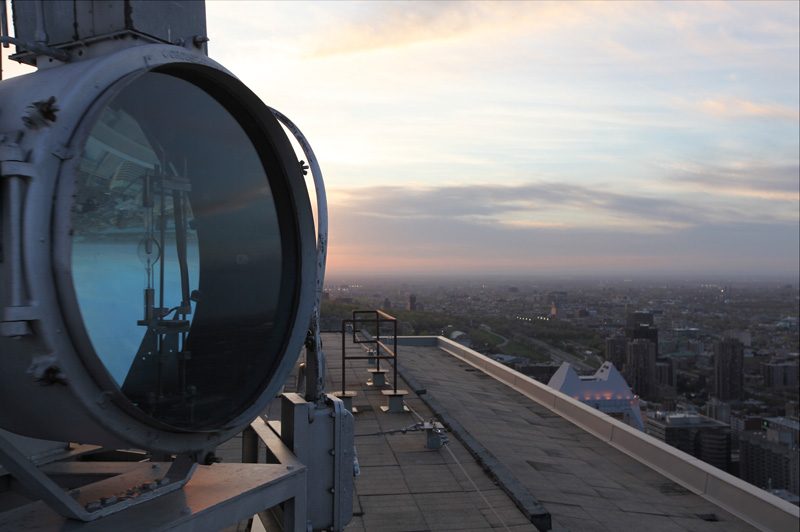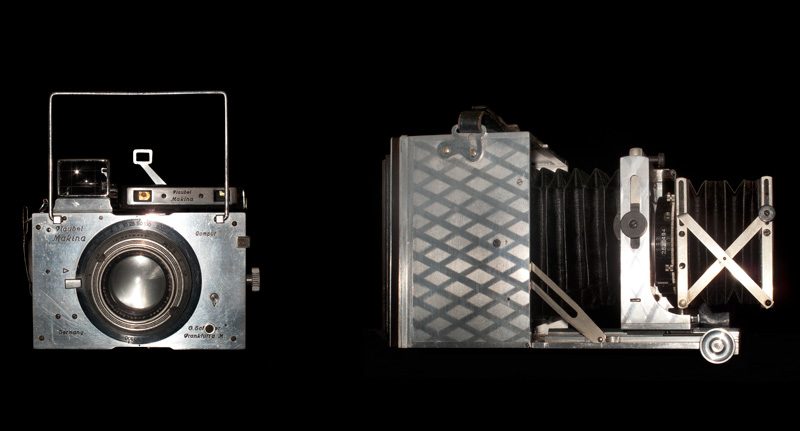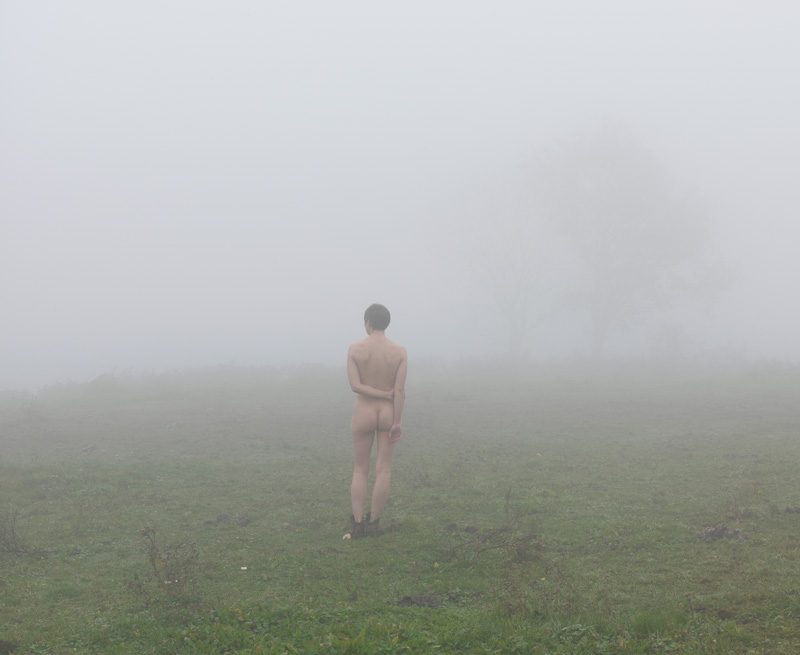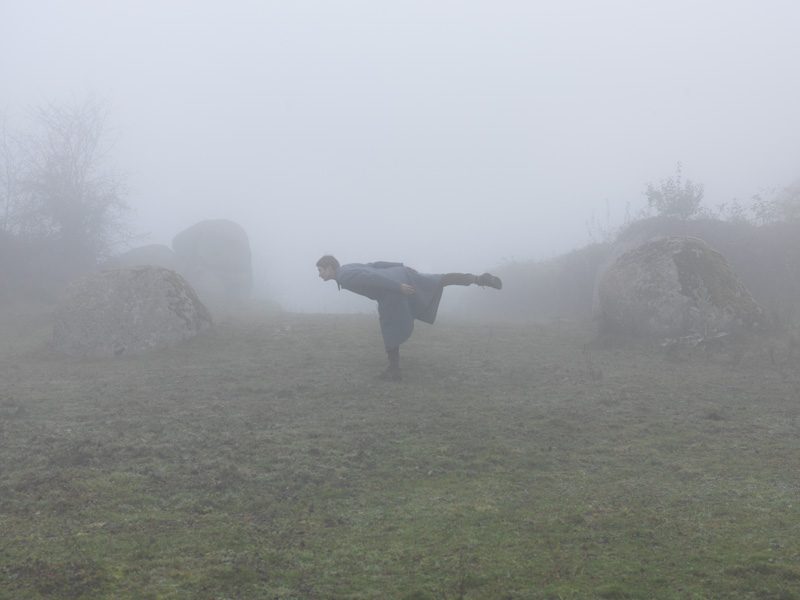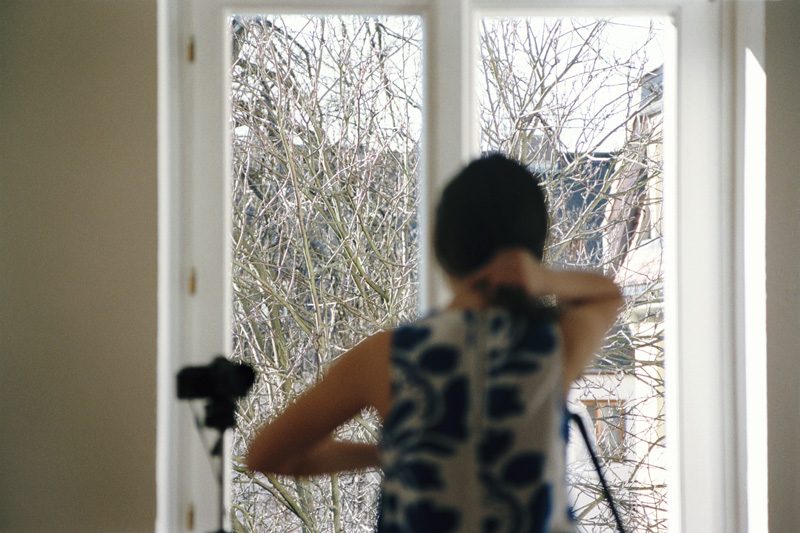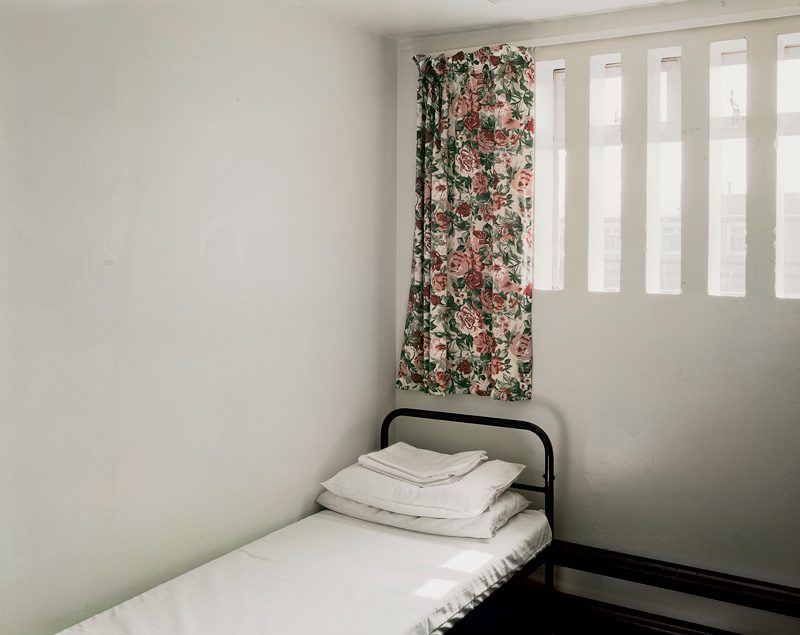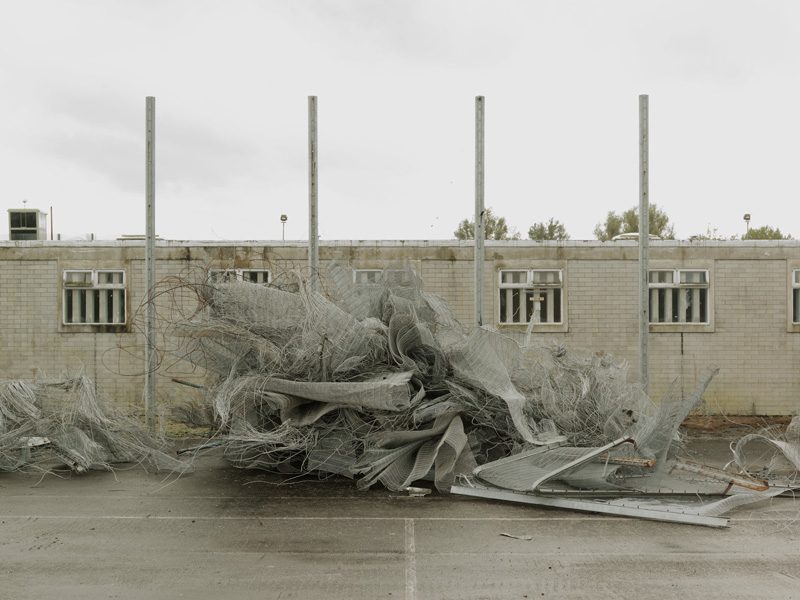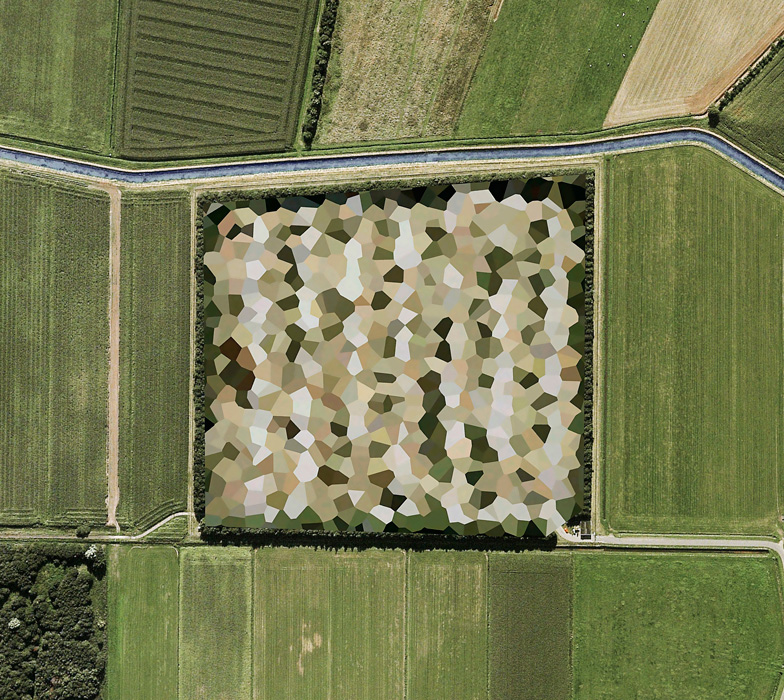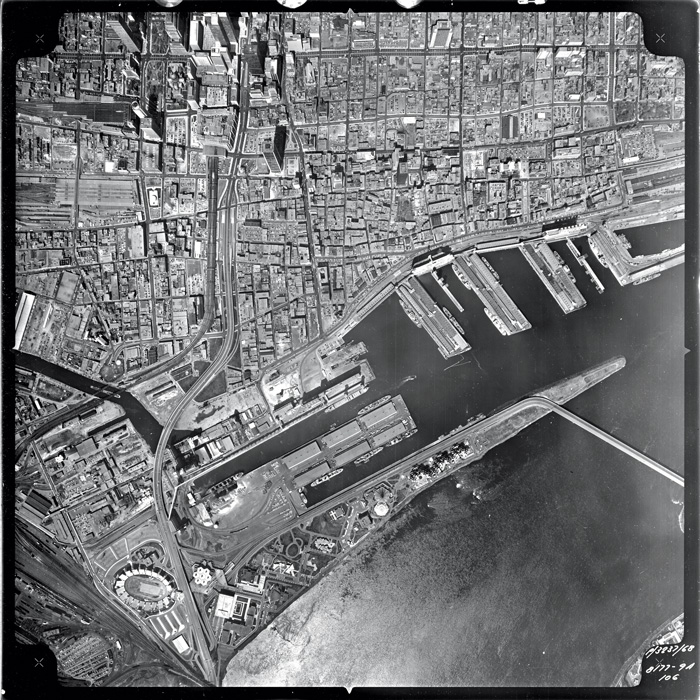By Zoë Tousignant
The challenge faced by theme-based biennials is to propose a conceptual framework that allows a great number and wide diversity of artworks to be brought together while providing an original viewpoint that positively inflects the reading of the works gathered. Rarely has Le Mois de la Photo à Montréal offered such a cohesive and powerful curatorial statement as in its 13th edition, Drone: The Automated Image. Curated by British photography historian and theorist Paul Wombell, previously the director of the Impressions Gallery in York (1986–94) and the Photographers’ Gallery in London (1994–2005), Drone featured the work of twenty-six artists and artist collectives displayed in fourteen exhibition sites, to which were added two film screenings. Several artist talks and round-table discussions were also part of the program, replacing the usual one-day academic conference and reflecting this edition’s emphasis on letting the artists speak for themselves.
The relationship between technology and agency was central to the theme of this edition. As Wombell explained in an interview with me conducted in September, he is interested in re-engaging with the history of photography from a perspective much broader and longer than its 175 years – a perspective that sees the camera as a momentous revolution within the millennia-long history of technology. His approach, furthermore, is based on the theories of object-oriented ontology, speculative realism, and new materialism, which together question the human-centric perspective of traditional Western philosophy. Translated to technology, and more specifically to the camera, such a point of view seeks to interrogate the degree to which cameras have agency beyond human involvement. As Wombell stated, “The camera has an extraordinary kind of life. It has its own space and way of working. We make it, but it also makes us.”
Although it appeared literally in only a few of the works shown, the drone was used as a symbol of technological apparatuses – what one might call “structures of seeing” – that operate autonomously and appear to think for themselves, or according to their own logic. Although we, as humans, are the architects of such structures, there is a sense in which, once introduced into the world, they take on a life of their own; they become beings of another species. Rather than exercising control over technology, we cohabit with it, whether as friend or as foe. The idea that cameras of all descriptions not only are part of our everyday lives but play a starring role in the way we perceive and are perceived ran through all of the exhibitions in the biennial.
The Body of the Camera. One of the effects of viewing these exhibitions was, for this visitor, an increasing awareness of cameras and other forms of photographic paraphernalia, which were both represented and present physically in many of the works. Acting as a kind of nexus for this conceptual strand was Montreal artist Michel Campeau’s series Industrial Splendour and Fetishism: The Bruce Anderson Collection (2013), on view at the Montreal Museum of Fine Arts. Certainly a pleasure to behold, the images in this series each showcase a photographic object of the analogue age pictured on a black background and lit to emphasize texture, mass, and colour. The idiosyncrasies of each object – the crackles of leather, the sheen of metal, the curling letters of a brand name – are what viewers are invited to consider, as well as the reality that such specimens are extinct. Contributing to the obsolescence of these exhibits is the fact that, with only a few exceptions, Campeau chose not to represent the most famous brands or models of photography’s history (of which the Bruce Anderson Collection undoubtedly contains many examples). The past being pointed to is therefore not just that of a technology, but that of an idiosyncratic (and decentralized) industry.
The notion that cameras have character was also apparent in Finnish artist Elina Brotherus’s art, presented at Optica, and especially in her video Artists at Work (2010), which shows her in the act of modelling for two male painters, whose numerous depictions of her, always in the same pose, are accumulated and added to the studio scene. Although Brotherus’s body is consistently in the frame, she is accompanied by her two cameras, set up on tripods in the room, which she periodically uses to document the proceedings – thus flipping the roles of observer and observed. Brotherus’s cameras, which appear alongside her in some of the portraits produced by the two painters, are her tools, but they also seem to act as guardians, providing an invisible sheath of protection for the artist’s scrutinized body.
A comparable optical game could be witnessed in Exposure #55: Munich, Waisenhausstrasse 65, 01.17.08, 1:55 p.m. (2008), the photographic installation by Barbara Probst, whose practice is based in Munich and New York and who was one of the four artists showcased at VOX. Composed of twelve views taken simultaneously by twelve cameras, the installation was displayed in a narrow room that evoked the confined space of the empty apartment pictured. The artist’s main subjects are a woman and a young girl; yet also visible are the cameras that capture them from various, occasionally uncomfortable (surreptitious or overly proximate) points of view. Calling attention to the subjectivity and instability of perception, Probst’s piece also makes manifest the ubiquity of the camera’s gaze.
The physical presence of photographic paraphernalia was perhaps most powerful in Montreal artist Véronique Ducharme’s work, exhibited in the smaller room at Galerie B-312. Essentially a slide show, Ducharme’s Encounters (2012–13) is a cleverly choreographed installation that uses three 35 mm projectors – which apparently were part of a display at Expo 67 – set up in the centre of the room and displaying intermittently, on two walls, photographs of animals in nature taken with a hunting camera. Triggered by the movement of approaching wildlife, this autonomous camera captures animals as they appear in the absence of human consciousness. The work’s strength is heightened by the placement of the projectors, which oblige the viewer wanting to have an unobstructed view of all images to stand close to them and become intimate with the physicality of their functioning. Recalling the sounds and warmth of a gun, these machines cast the viewer in the role of predator.
Invisible Apparatuses. The invisibility or intangibility of such “structures of seeing” was another conceptual thread running through many of the artworks included in Drone. Falling within this category while simultaneously emphasizing the physicality of machinery was Montreal-based artist David K. Ross’s film Le Phare (2012). On view at La Maison de la culture du Plateau-Mont-Royal, the thirteen-minute film beautifully and exhaustively documents, from a variety of angles, the workings of the beacon that every night illuminates the city of Montreal from the rooftop of Place Ville Marie. Making tangible a feature of city life that most Montrealers can experience only from afar, as an iconic yet immaterial presence, Le Phare allows viewers finally to return the beacon’s gaze.
The theme of Orwellian surveillance was addressed in several works, including Surveillance Panorama Project No. 4: Vienna MMIX 10008/7000, Speculative Portrait of a Society (2009–11) by Swiss artist Jules Spinatsch. The large-scale display, presented within the group show at the Darling Foundry, consisted of 120 photographs, arranged in a grid, chosen from 10,008 shots of the 2009 Vienna Opera Ball taken with two computer-operated cameras over the course of the eight-hour event. The images selected by Spinatsch illustrate the automatism of the cameras, which cannot discriminate between the figures of Vienna’s high society attending the ball and trivial details such as flecks of dust on a chandelier. Exemplifying Wombell’s thesis that cameras act according to their own, non-human logic, the work furthermore presents a complex picture of the act of surveying something that is itself a spectacle.
The automatic character of photographic technologywas also investigated in Don’t Smile Now… Save it for Later! (2008), the series by the London- and Beijing-based artist duo known as WassinkLundgren, exhibited at MAI (Montréal, Arts Interculturels). Comprising twenty-five photo-booth photographs, the series was made in various locations in London – mainly shopping malls, post offices, and supermarkets – by holding a mirror up to the camera to reflect and capture the people and objects outside the booths. Literally reversing what is supposed to be photographed, Don’t Smile Now offers a glimpse of the social structures in which photo booths are installed while rendering evident the false sense of privacy usually involved in the making of such images. Opening the photo booth up to the outside world, the artists force its camera (and subjects) to confront what lies beyond the curtain.
Trevor Paglen’s exhibition, on view at SBC Gallery, was one of the few that included representations of drones. According to the curator, the American artist and geographer’s large-format colour photographs, produced between 2006 and 2011, question the idea imposed by the (American) media that war is always somewhere else, somewhere far away. War is very much at work on home soil; Paglen’s “landscapes” show large expanses of colourful sky whose splendour is interrupted by the tiny intrusion of a drone in flight. Accompanying such landscapes were (in addition to other works) eight albumen prints revealing similar views of drones in flight, seen here travelling over Indian Springs, Nevada – the site of military drone installations. By using this nineteenth-century process to depict present-day technology, and by referencing on several levels the photo-graphs of Eadweard Muybridge, Paglen seems to be arguing that photography has always been about the development of instruments of surveillance.
The idea that cameras of all descriptions not only are part of our everyday lives but play a starring role in the way we perceive and are perceived ran through all of the exhibitions in the biennial.
Making another link with photography’s past, the exhibitions at the CCA proposed an eye-opening combination of images by Donovan Wylie, from Northern Ireland, and Ilse Bing, a leading modernist photographer from Germany, shown under the shared title H-Block. Separated by over seventy years, these projects both illustrate how the state and state surveillance can be integrated into a building’s very design. Offering a detailed, gradual representation of the dismantling and eventual destruction of the Maze prison in Northern Ireland over the course of the 2000s, Wylie’s extensive photographic series was compared with Bing’s documentation in 1930 of the Henry and Emma Budge-Heim social housing project, a modernist home for the elderly in Frankfurt. Although intended for different purposes, these structures, which both employ the H-block configuration, are also equally driven by a will to control through the spatial ordering of bodies. Although Bing’s approach to her subject matter was, in contrast to Wylie’s, based on utopian ideas, these exhibitions similarly reveal how the all-seeing eye of the camera can be translated to concrete.
Contemporary History. During our interview, I asked Paul Wombell whether the retrospective aspect discernible in this edition of the Mois de la Photo à Montréal was deliberate. The association of Bing and Wylie at the CCA; the juxtaposition, at the McCord Museum, of contemporary works by Mishka Henner with aerial views of Montreal made in the 1960s and 1970s; the screening of Michael Snow’s 1971 film La Région centrale; and the general inclusion of several artworks produced during the 1990s gave the edition a historical dimension uncommon in contemporary art biennials. Confirming my impression, the curator offered, “I don’t like the word contemporary, because it suggests that everything has to be new, of this moment. The ideas and thoughts in this project are about today, but they go back hundreds, in fact thousands of years. . . . It was important to me that there be work that is twenty years old, and some work from the 1930s. . . . This is about questioning how technology, photography, and the camera have functioned historically. That we need to rethink how we write about photography and the history of photography was part of the project.” Focusing on the role that the camera – not as a tool, but as an instrument, as Wombell is wont to proclaim – plays and has played in human perception, Drone: The Automated Image was a compelling demonstration of how the history of photography should be rethought.
Zoë Tousignant is a historian of photography and an independent curator working in Montreal. She is a recent graduate of the PhD program in art history at Concordia University. Her research interests centre on the dissemination of photographic culture, both historically and in the present.

